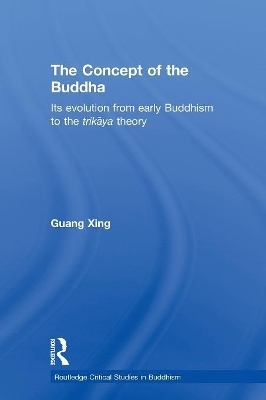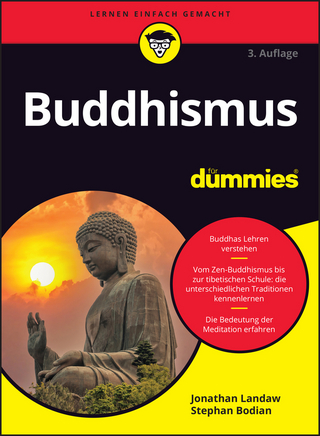
The Concept of the Buddha
Routledge (Verlag)
978-0-415-60002-6 (ISBN)
Guang Xing gives an analysis of one of the fundamental Mahayana Buddhist teachings, namely the three bodies of the Buddha (the trikaya Theory), which is considered the foundation of Mahayana philosophy. He examines how and why the philosophical concept of three bodies was formed, particularly the Sambhogakaya, which is the Buddha to be worshipped by all Mayahanists. Written in an accessible way, this work is an outstanding research text for students and scholars of Mayahana Buddhism and anyone interested in Buddhist philosophy.
Guang Xing obtained his PhD from the School of Oriental and African Studies, London in 2003. He is a research assistant professor at the Centre of Buddhist Studies, the University of Hong Kong. His research interests are Chinese and Mahayana Buddhist studies, particularly the origin of Mahayana.
Introduction 1. The Concept of the Buddha in Early Buddhism 2. The Concept of the Buddha in the Early Indian Buddhist Schools: Sarvastivada 3. The Concept of the Buddha in the Early Indian Buddhist Schools: Mahasamghika and Other Schools 4. The Origins and Development of the Dharmakaya 5. The Origins and Development of the Sambhogakaya 6. The Origins and Development of the Nirmanakaya 7. The Attributes of the Buddha and Other Buddhas in Early and Middle Mahayana Sutras Conclusion: The Five Basic Stages in the Development of the Concept of the Buddha
| Erscheint lt. Verlag | 17.9.2010 |
|---|---|
| Reihe/Serie | Routledge Critical Studies in Buddhism |
| Verlagsort | London |
| Sprache | englisch |
| Maße | 156 x 234 mm |
| Gewicht | 490 g |
| Themenwelt | Geisteswissenschaften ► Religion / Theologie ► Buddhismus |
| Naturwissenschaften ► Geowissenschaften ► Geografie / Kartografie | |
| Sozialwissenschaften ► Soziologie ► Spezielle Soziologien | |
| ISBN-10 | 0-415-60002-2 / 0415600022 |
| ISBN-13 | 978-0-415-60002-6 / 9780415600026 |
| Zustand | Neuware |
| Informationen gemäß Produktsicherheitsverordnung (GPSR) | |
| Haben Sie eine Frage zum Produkt? |
aus dem Bereich


